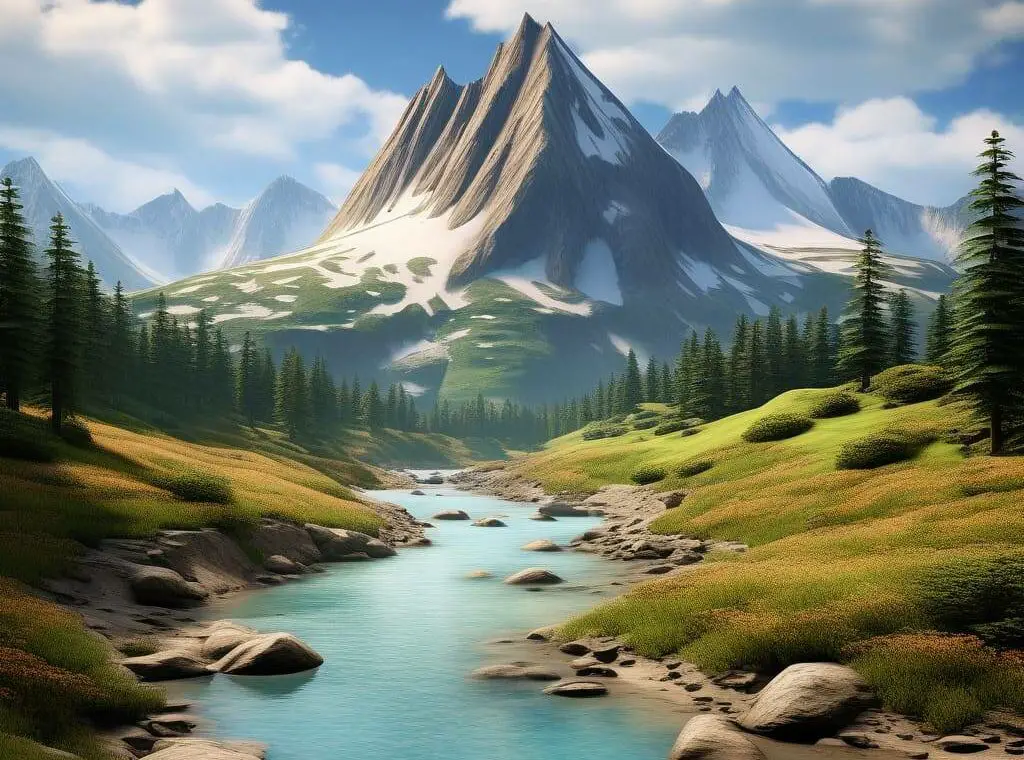Table of Contents
I. Introduction
Nestled in the southwestern part of the Lone Star State, the Mountains and Basins region of Texas is a treasure trove of natural wonders, unique landscapes, and fascinating history. This diverse area, encompassing the Davis Mountains, Guadalupe Mountains, and the Chihuahuan Desert, offers a rich tapestry of geological features, cultural heritage, and outdoor adventures. Let’s embark on a journey through fun facts that unveil the enchanting essence of the Texas Mountains and Basins.

II. Geological Marvels
A. Davis Mountains
- Sky Island Effect: The Davis Mountains are considered a “sky island” due to their higher elevation, resulting in a cooler, more biodiverse environment compared to the surrounding lowlands.
- McDonald Observatory: Perched atop Mount Locke, the McDonald Observatory in the Davis Mountains boasts world-class telescopes, offering breathtaking views of the night sky.
B. Guadalupe Mountains
- Guadalupe Peak: Rising to 8,749 feet, Guadalupe Peak is the highest point in Texas, providing hikers with panoramic vistas of the surrounding Chihuahuan Desert.
- Fossils and Reefs: The Guadalupe Mountains were once a thriving reef during the Permian period, and remnants of ancient marine life can be found in the fossilized formations.
C. Chihuahuan Desert
- Largest Desert in North America: The Chihuahuan Desert, stretching into Mexico, is the largest desert in North America, characterized by its arid landscapes and unique flora and fauna.
- Big Bend National Park: Encompassing a significant portion of the Chihuahuan Desert, Big Bend National Park offers a diverse range of ecosystems, from the Chisos Mountains to the Rio Grande.
III. Cultural Heritage
A. Native American Influence
- Apache and Comanche Tribes: The Mountains and Basins region was once home to Native American tribes, including the Apache and Comanche, who left a lasting impact on the area’s history and culture.
- Rock Art: Numerous archaeological sites feature ancient rock art, providing a glimpse into the spiritual and artistic expressions of indigenous peoples.
B. Historic Trails
- El Camino Real de Tierra Adentro: This historic trade route, dating back to the 16th century, passed through the region, connecting Mexico City to San Juan Pueblo in present-day New Mexico.
- Butterfield Overland Mail Route: The Butterfield Overland Mail Route, a crucial transportation link in the mid-19th century, traversed the area, facilitating communication between the East and West.
IV. Breathtaking Landscapes
A. Guadalupe Mountains National Park
- McKittrick Canyon: Known for its stunning fall foliage, McKittrick Canyon in Guadalupe Mountains National Park offers a picturesque setting for hiking and exploration.
- The Bowl: A unique geological formation, The Bowl, nestled within the Guadalupe Mountains, is a high-altitude grassy meadow surrounded by rugged peaks.
B. Big Bend National Park
- Santa Elena Canyon: Carved by the Rio Grande, Santa Elena Canyon in Big Bend National Park features towering limestone cliffs and offers breathtaking views of the river.
- The Window: This natural rock formation provides a frame to the Chisos Basin and offers a mesmerizing vantage point for sunset enthusiasts.
V. Outdoor Adventures
A. Hiking and Backpacking
- Guadalupe Peak Trail: Hike to the summit of Guadalupe Peak for a challenging yet rewarding experience, earning you the title of having conquered the highest point in Texas.
- South Rim Trail: Traverse the South Rim Trail in the Chisos Mountains for unparalleled panoramic views of the Chihuahuan Desert.
B. River Rafting
- Rio Grande: The Rio Grande, flowing along the border between Texas and Mexico, offers opportunities for river rafting and scenic float trips amidst the dramatic landscapes of Big Bend.
Conclusion
The Texas Mountains and Basins region, with its geological marvels, rich cultural heritage, breathtaking landscapes, and outdoor adventures, stands as a testament to the diverse and enchanting nature of the Lone Star State. From the high peaks of the Davis and Guadalupe Mountains to the vast expanse of the Chihuahuan Desert, this region beckons explorers, history enthusiasts, and nature lovers alike. Discover the hidden gems, relish the vibrant history, and immerse yourself in the captivating allure of the Mountains and Basins region of Texas.
What makes the Mountains and Basins region of Texas unique geologically?
The region is characterized by “sky islands” like the Davis Mountains, fossilized formations in the Guadalupe Mountains, and the vast Chihuahuan Desert, North America’s largest desert.
What cultural heritage is present in the Mountains and Basins region?
Native American influence, including the Apache and Comanche tribes, is prominent. Historic trails like El Camino Real de Tierra Adentro and the Butterfield Overland Mail Route also contribute to the region’s heritage.
Which national parks are prominent in the Mountains and Basins region?
Guadalupe Mountains National Park, home to Guadalupe Peak, and Big Bend National Park, featuring Santa Elena Canyon and The Window, showcase the region’s diverse landscapes.
What outdoor adventures are popular in the Mountains and Basins region?
Hiking and backpacking enthusiasts can explore trails like Guadalupe Peak Trail and South Rim Trail. Additionally, river rafting along the Rio Grande in Big Bend National Park is a thrilling activity.
How does the Mountains and Basins region contribute to Texas’s ecological diversity?
The region’s varied topography, from mountains to desert, fosters diverse ecosystems. The Chihuahuan Desert’s unique flora and fauna and the relict forests of the Davis Mountains contribute to Texas’s ecological richness.






